Kingfishers are a fascinating group of birds! Typically described as small-bodied with enormous beaks and heads, the majority are piscivorous. However, some stray surprisingly far from this rule, and we will discuss these rule-breakers soon.
In this article, I will share a few facts about Kingfishers. Some of these might be familiar, but I think there will be several that you’ve never heard of before.
So, without further adieu, let’s dive into eighteen facts about Kingfishers!
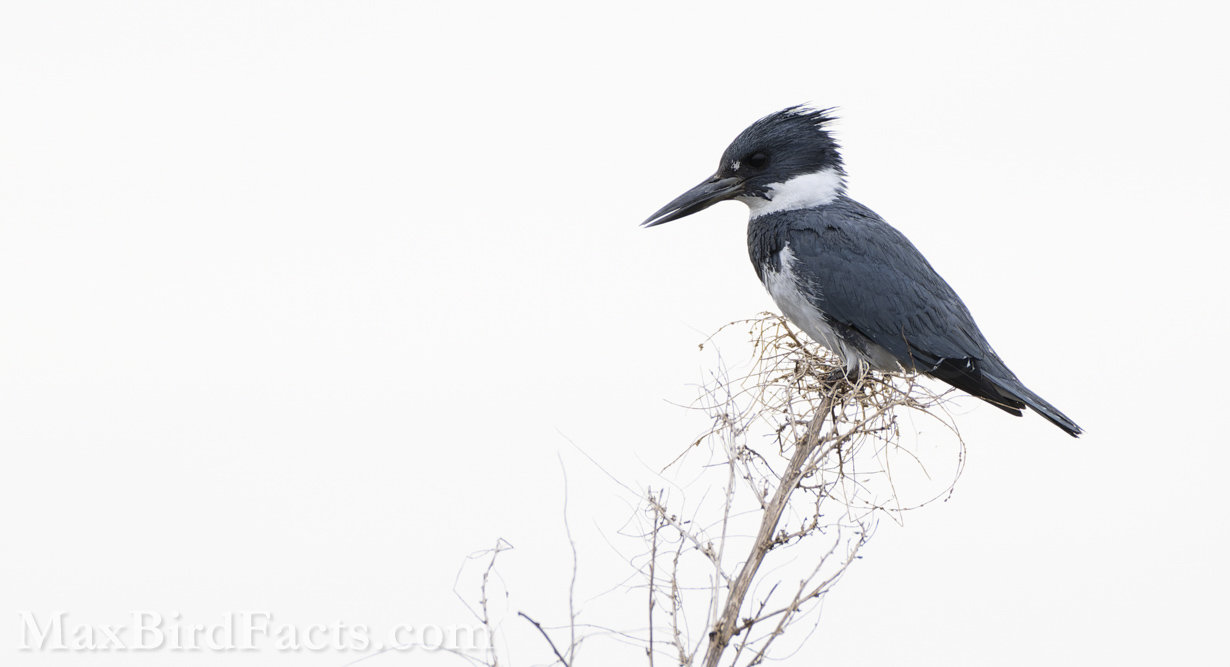
1. There are 117 species of Kingfisher living today under the family Alcedinidae.
Spanning every continent except Antarctica, Kingfishers are a prevalent group of birds.
Their strongholds are typically in tropical and subtropical environments, with most species being residents of their regions. Still, several species migrate annually between their breeding range and wintering grounds.
2. The genus name Aledinidae is Latin for “family of vivid green, blue, purple, and black.”
Nearly every species of Kingfisher is adorned with spectacularly brilliant plumage. The Common Kingfisher (Alcedo atthis) has caught the eyes of people across Europe and Asia for thousands of years because of its stunning electric blue and tawny brown aspect.
These structural modifications to the microscopic surface of their feathers cause these beautiful greens, blues, and purples. Microscopic air pockets among the feather reflect particular wavelengths of light, creating dazzling shades of metallic blues and vivid greens.
Yet, there are several Kingfishers embellished in much drabber garb. For example, the Pied Kingfisher (Ceryle rudis) of Africa, India, and Southeast Asia is simply white with a black crown, eyeband, and collar and black barring and spots throughout its body.
3. North America has three species of Kingfisher.
The three Kingfishers of North America are the Belted Kingfisher (Megaceryle alcyon), Ringed Kingfisher (Megaceryle torquata), and Green Kingfisher (Chloroceryle americana).
The Belted Kingfisher is by far the most widespread in the United States and Canada. Staying year-round throughout the majority of Central US, while other populations breed throughout Canada and Alaska to then retreat to Mexico and Central America for winter.
The Ringed and Green Kingfishers range primarily throughout Mexico and Central and South America and only poke into the southern borders of Texas and Arizona. Throughout their ranges, the populations of both species tend to be annual residents. The consistent tropical climates of these regions are the likely reason for their lack of migration.
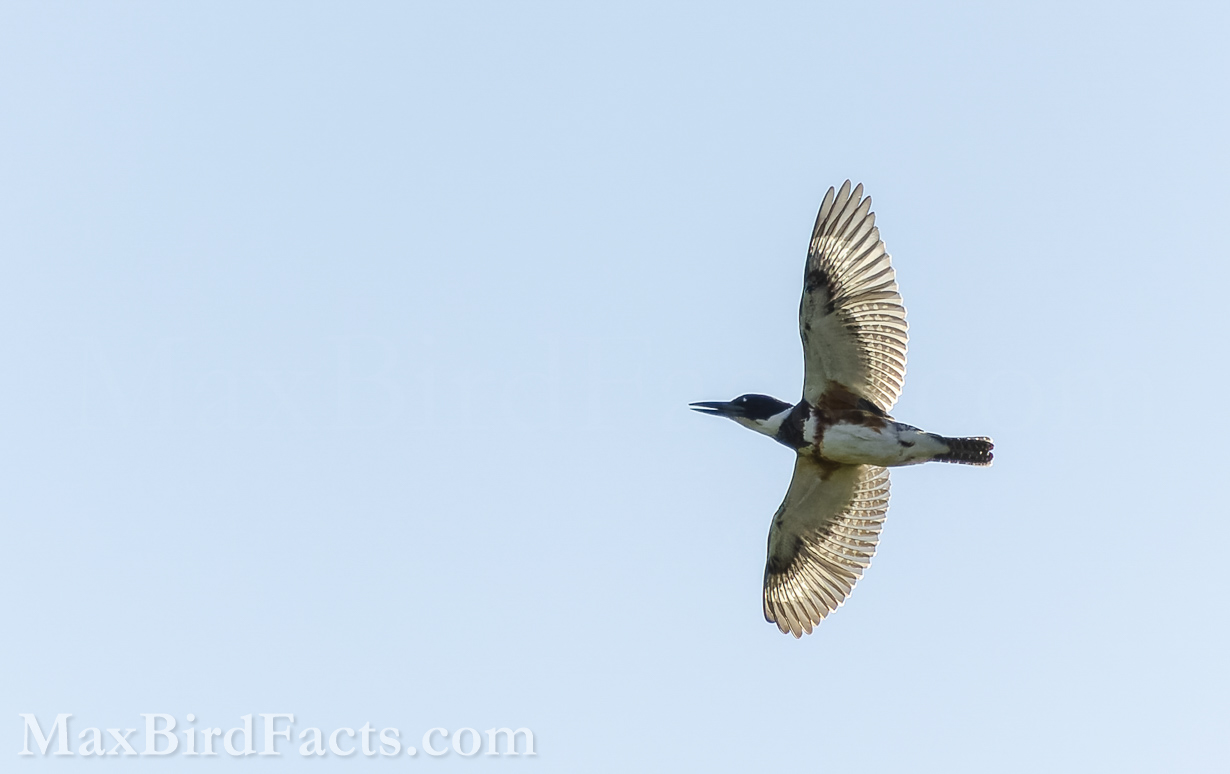
4. Belted Kingfishers (Megaceryle alcyon) break the mold of most other birds, where the female Kingfisher is more colorful than the male.
Female Belted Kingfishers sport a rusty-orange breast-band and flanks compared to a male bird’s clean white breast and belly. The female’s band, or belt, could even be the root of its common name, the Belted Kingfisher.
This more flamboyantly colored female is unusual for birds. Typically, the male avian will sport a more dashing outfit while the female is more modestly feathered. This difference in coloration proves the fitness of the male to female birds, while the drab colors of the female allow her to hide from predators more easily.
Regardless, I don’t believe that a rusty belt on the female bird will do much to draw a predator’s attention. Belted Kingfishers perch in very obvious locations, so this color difference is likely a prominent visual indicator for other birds to know if there is a potential mate or rival on their stretch of river.
5. The Kingfisher’s beak was the direct inspiration for the Shinkansen Bullet Train.
The designers of the Shinkansen Bullet Train faced a dilemma. Whenever their train would enter a tunnel, it would push a wall of air out the other end of the tunnel, resulting in massive resistance and a loud bang. Wanting to keep the aspect that defines a “bullet” train speed rather than noise, the train’s configuration needed to change.
The solution the engineers found was in the beak of the Kingfisher. The Kingfisher’s beak is one of the most aerodynamically and hydrodynamically perfect designs in nature, allowing it to pierce through the water after a fish without making a splash.
Modeling the front of their train after the Kingfisher’s beak allowed it to cut through the air before entering tunnels, removing the noise complaints. This new design is so efficient that the Shinkansen Bullet Train is now 10% faster and uses 15% less electricity!
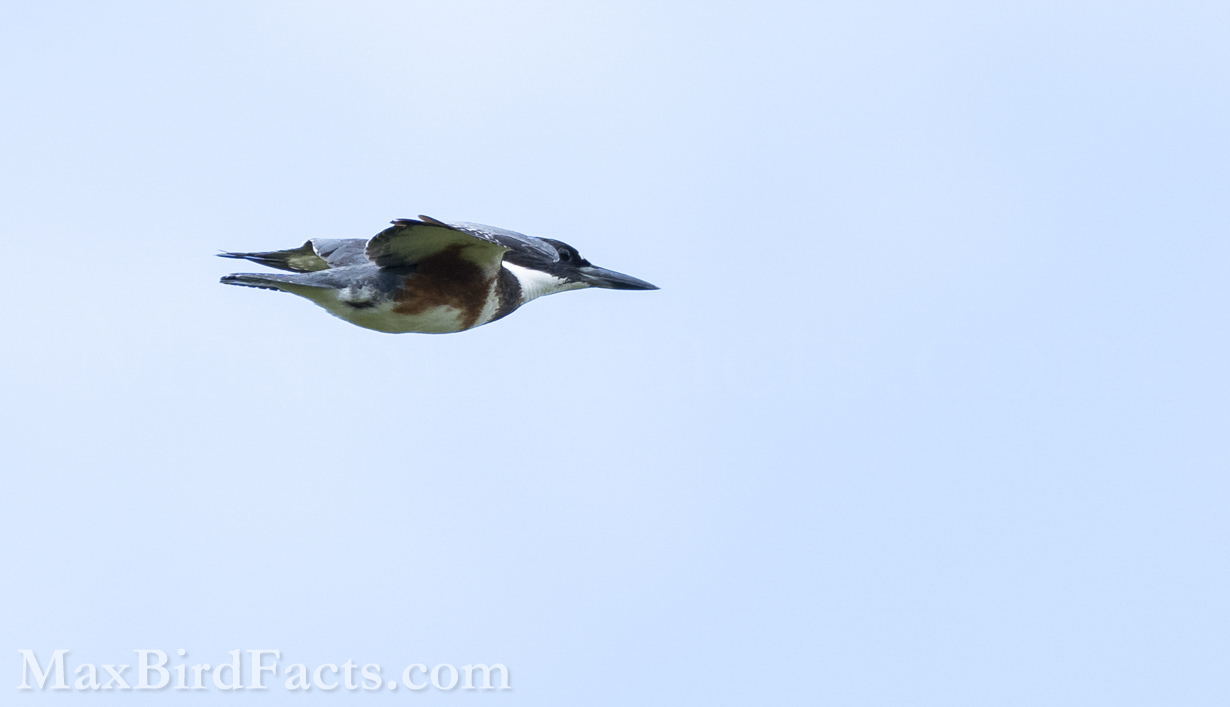
6. The Kingfisher’s order, Coraciiformes, translates to “Raven-like.”
The translation of “Raven-like” comes from the Latin Corax– for “raven” and –forma for “form” or “like.” Like me, you’re probably thinking that Kingfishers and Ravens look nothing alike.
That is because the primary species that caused this name comes from the group of birds called Rollers, the family Coraciidae. At a cursory glance, yes, the Rollers could pass for extremely colorful Ravens, but I still feel that this name woefully misrepresents the birds in this order.
7. Kingfishers have five relatives within their order: Todies, Motmots, Bee-eaters, Rollers, and Ground-Rollers.
As stated previously, Rollers (Coraciidae) are the reason this order is called Coraciiformes, though none of the other relatives come close to resembling a Raven. However, these birds all share a handful of very specific and spectacular behaviors.
Nearly all members of Coracciformes thrash their prey before consuming it. This vicious act serves two purposes: first, it stuns or kills the victim quickly; second, this step can help remove any unwanted defenses from the bird’s meal.
All Coraciiformes are diurnal hunters; most are solitary, with the Bea-eaters being the divergence here. Each member also has a notably large head and beak compared to their body, and they even share similar foot structures, but we will talk about that soon enough.
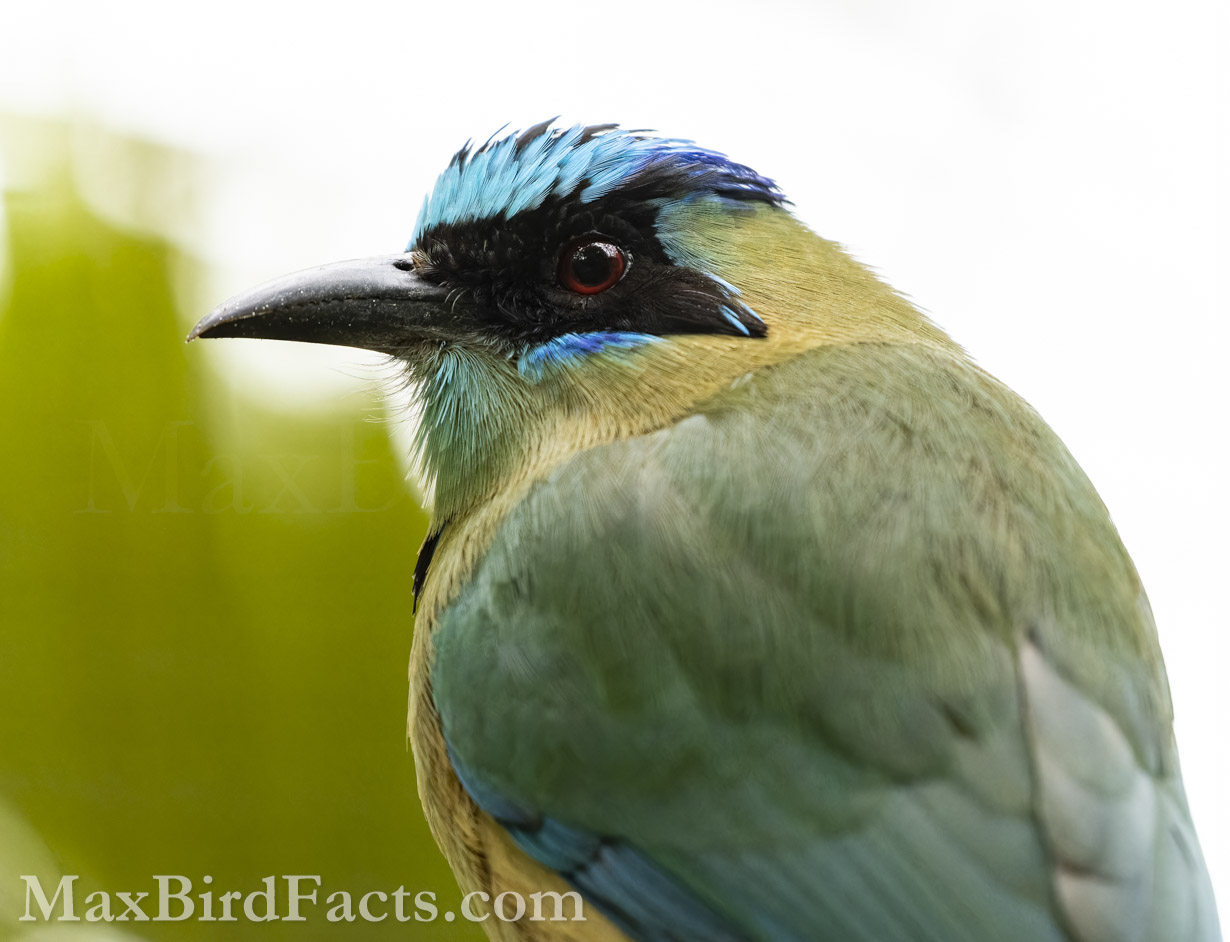
8. The Greek tale of Halcyone and Ceyx tells the story of the Kingfisher’s origin.
In the story of Halcyone (or Alcyone) and Ceyx, the couple was revered by both their subjects and the gods for their devoted love towards each other. However, once the king of the gods overheard the couple compare themselves to himself, Zeus, and his wife, Hera, he was enraged.
One day, when the husband Ceyx sailed for Delphi to seek guidance from Apollo’s oracle, Zeus formed a mighty storm that sunk Ceyx’s ship and drowned him. In his last breaths, Ceyx prayed that his body would wash ashore so his wife Halcyone could bury him.
After weeks of prayer, Halcyone received a vision from the god of dreams, Morpheus, of her husband’s death. Distraught, she ran to the beach and found his body. After she performed his burial, Halcyone threw herself into the sea to drown and join her husband in Hades.
Seeing the grief and destruction he caused, Zeus bemoaned his action of killing Ceyx and transformed him and his wife into Kingfishers so that they could be together again.
9. The legend of Halcyone and Ceyx represents some of the Kingfisher’s genuine lifestyle.
Kingfishers are highly monogamous birds who stay loyal to each other for many years or even their whole lifetime. Many species of Kingfisher have been observed conducting cooperative breeding strategies.
Cooperative breeding is where one sibling stays at the nest after it matures to help its parents raise its siblings. This strategy is remarkable and typically only seen in some of the most intelligent species.
The influence of the story of Halcyone and Ceyx also lives on through the birds’ taxonomic names. Ceyx is the Old World River Kingfishers genus, Halcyon is the tree Kingfishers, and even the Belted Kingfisher’s species name is alcyon. (For clarity, Halcyon and Alcyon are used interchangeably in Greek myth).

10. Kingfishers don’t sing; they rattle, tick, chatter, and scream.
Most Kingfishers give a very distinct rattling call. Belted Kingfishers, specifically, will deliver constant mechanical rattling tirrrrr calls if they sense any change in their surroundings. They will even mix their calls with screams if there is emanate danger.
Other species, like the Yellow-billed Kingfisher (Syma torotoro), have a short trill call reminiscent of a songbird. Still, the typical default call for most Kingfishers is a version or variant of a rattle or scream.
11. Not all Kingfishers eat fish, but all are carnivorous birds.
The immediate thought of a Kingfisher is a brilliantly colored bird diving into the clear water of a stream after some fish. This is true to form for many species of Kingfisher, but not all.
In the New World, all Kingfishers are aquatic hunters darting into rivers, lakes, and other bodies of water that harbor fish. However, several Old World Kingfishers are far more terrestrial and prey on invertebrates, reptiles, other birds, and mammals.
Species like the Banded Kingfisher (Lacedo pulchella) of the Malay Archipelago have extremely flexible diets and hunting strategies. Happy to eat anything from a speedy lizard to diving after fish in jungle streams or even probing its beak into the soil to dig out deadly centipedes.
12. The Blue-breasted Kingfisher (Halcyon malimbica) uses tools to break through snail shells.
Tool use is a remarkable ability for any species to achieve, and I feel it is becoming increasingly common for researchers to discover birds using tools. Still, the Blue-breasted Kingfisher utilizes stones to break through snail and crab shells to get to their flesh inside.
Rather than picking up the stone in its bill and throwing it at the shell, the Kingfisher dashes its prey against a suitable stone until it can pry out the meat. The thought process of selecting the correct stone to use as an anvil is a clear sign of intelligence; if it is too small, it will take more energy and attempts to break the shell.
This level of comprehension shows that Kingfishers are brilliant birds and likely deserve much more study than they have received in this area.

13. Kingfishers have a unique foot arrangement, called syndactyl.
The syndactyl foot style is caused by a fusion between toes two and three. This fusion turns the toe into an incredibly solid digging implement that Kingfishers require when burrowing their nests into riverbanks.
To visualize this, hold out your hand, curl in your pinky finger, and stretch your thumb away from your other fingers. Now you have a representation of a bird’s foot: the thumb is the first toe, the index finger is the second, the middle finger is the third, and the ring finger is the fourth. If you press your index and middle fingers together, now you can see the Kingfisher’s syndactyl foot.
Kingfishers retain both claws, and the last joint is separated on the conjoined appendage. This arrangement gives the birds a highly versatile tool for grasping branches and digging their burrows.
14. Kingfishers calculate the refraction and reflection of the water before diving after prey.
The refraction of a fish underwater is a tricky problem for piscivores. The image they see will line up differently from the location of their meal under the water. So, many species, including Kingfishers, have to make some quick calculations on the fly.
However, the Kingfishers don’t waste their time with math. Instead, these birds have an extraordinary adaptation to fit their lifestyle, a second fovea in their eye. This second focal point allows them to see through the water more clearly than just the standard central fovea.
This means that even if the Kingfisher dives slightly off from where it thought the fish was, it can quickly rocket toward the prey’s precise location once underwater.
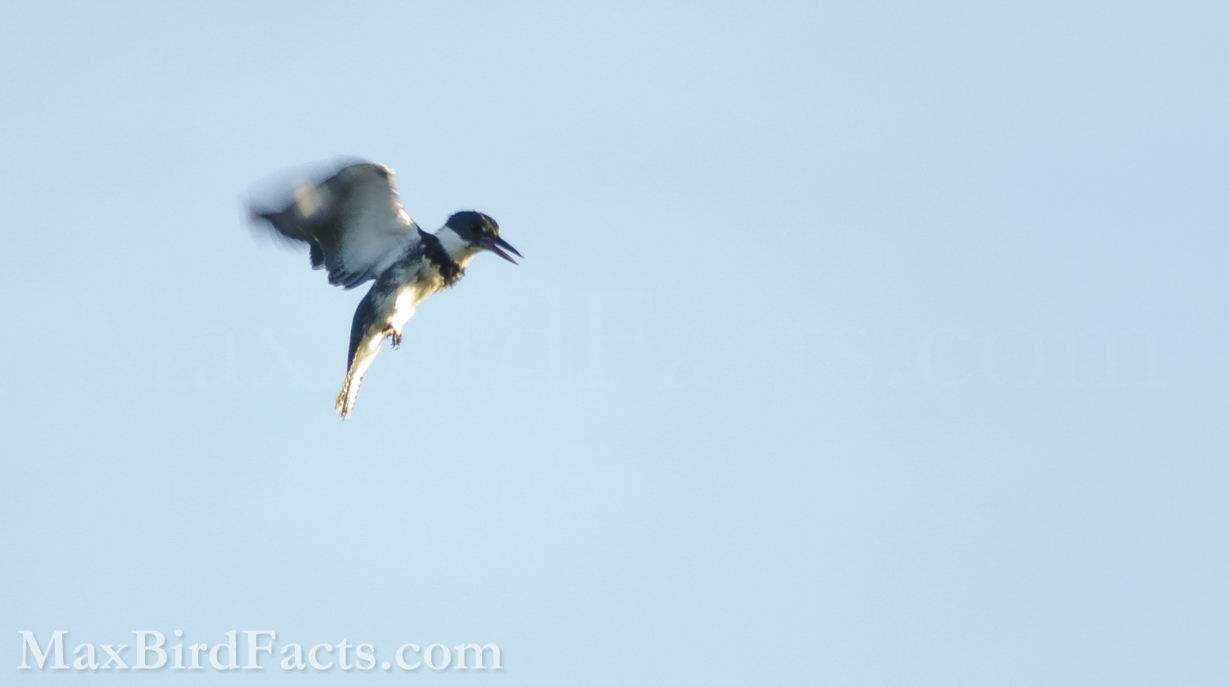
15. Kingfishers have a vast spectrum of sizes, from a little larger than a hummingbird to nearly the size of a crow.
The smallest Kingfisher, the Black-backed Dwarf-Kingfisher (Ceyx erithaca), weighs only 17 grams, while the behemoth Giant Kingfisher (Megaceryle maxima) weighs over 420 grams! Most Kingfishers fall into the 50-150 gram spectrum. This relatively small size allows this family of birds to fly at staggering speeds with extreme precision.
However, the largest Kingfisher of all isn’t even named a “Kingfisher!”
16. The Laughing Kookaburra (Dacelo novaeguineae) is the most monumental Kingfisher.
The Laughing Kookaburra is the most tremendous member of Alcedinidae at over 460 grams. So even though it isn’t named a Kingfisher, its relation is quite apparent.
Simply looking at the Kookaburra’s beak readily shows its relationship to its more widespread cousins. Its mandible is slightly deeper than some Kingfishers, but this is due to the Kookaburra’s adapted lifestyle.
Still, the Laughing Kookaburra shares nearly every trait with other Kingfishers: it nests in cavities excavated from termite nests, it has syndactyl feet, it is entirely carnivorous, and its calls are somewhat reminiscent of a rattle. Earning its name from its iconic vocalizations, the Laughing Kookaburra has a nearly perfect sound to how a child would mimic a monkey.
The genus name for the five species of Kookaburras, Dacelo, is simply an anagram of the prominent Kingfisher genus, Alcedo.
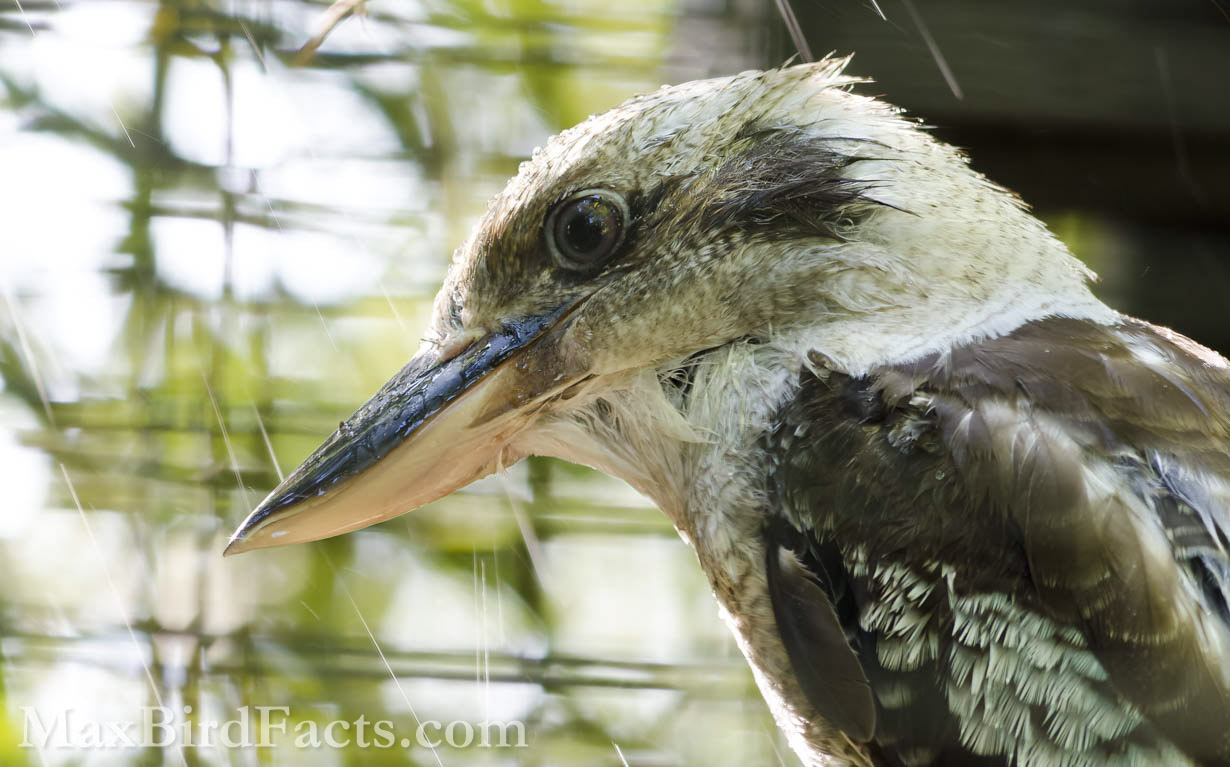
17. The Guam Kingfisher (Todiramphus cinnamominus) is the only Kingfisher that is currently considered extinct in the wild.
The Guam Kingfisher, also called Sihek by the indigenous Chamorro, is currently considered extinct in the wild today. This Kingfisher was officially listed as extinct in 1986, with the last speculative sighting of this bird in the 1960s.
Thankfully, the United States saw the bird’s emanate demise and captured the last 29 birds from Guam for captive breeding programs. These programs have been a massive success, and the Guam Kingfishers have made an astonishing recovery.
By 2013, 124 of these extinct Kingfishers were flying around aviaries across the globe. Today, there are talks about releasing some of these birds back into the wild. Unfortunately, Guam is not the place it was when the Kingfishers flew free. Brown tree snakes have overrun the island, making nesting virtually impossible for these birds.
Regardless, the island Palmyra is the perfect substitute for the Guam Kingfisher. The island has no predators, bountiful food, and plenty of potential nesting sites for the Kingfishers.
What’s more exciting is their reintroduction could even occur this year, 2023! Of course, only time will tell if these reintroduction efforts will successfully resurrect this extinct species, but I hope they will.
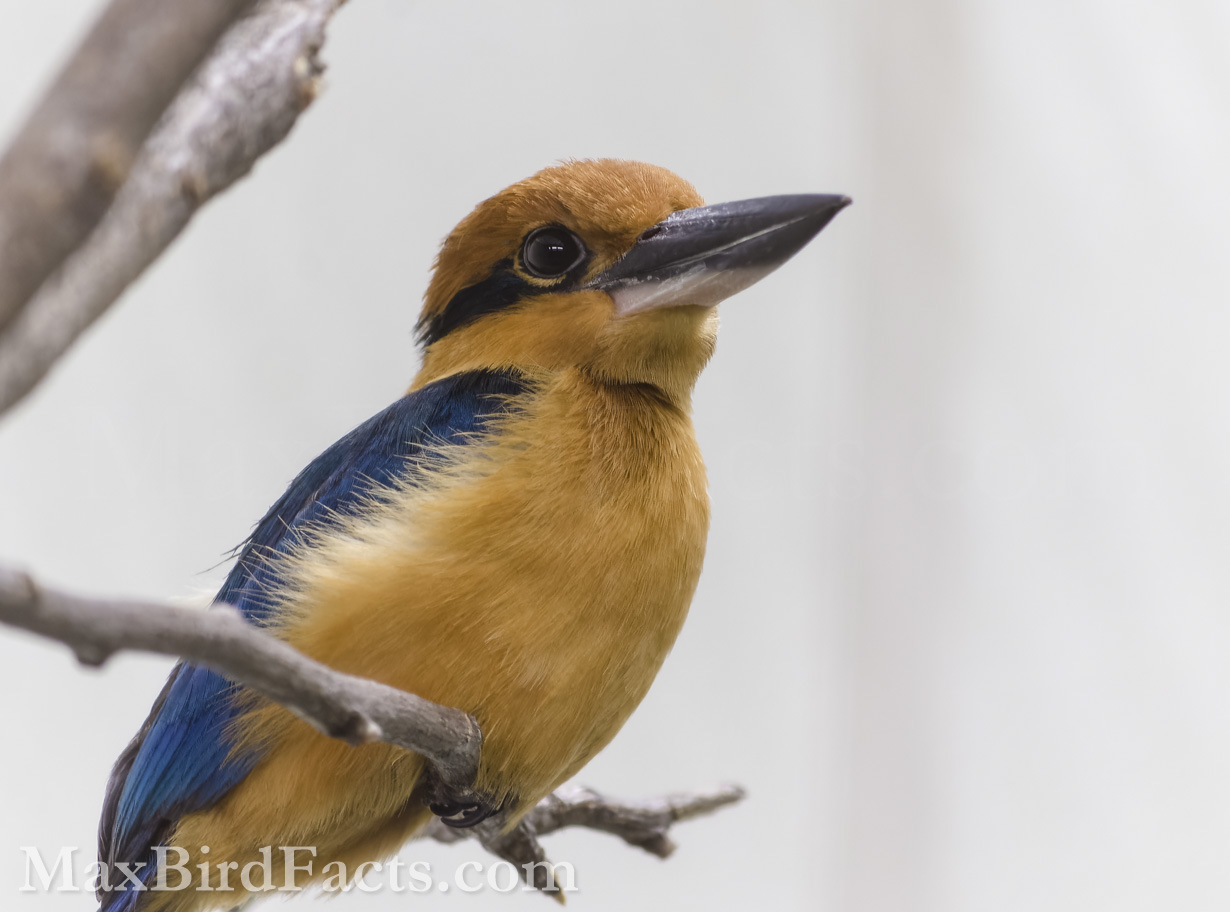
18. Kingfishers have massive cultural importance globally.
Kingfishers have inspired countless stories across countless cultures. We previously talked about the Greek story of Halcyone and Ceyx and its importance in the taxonomy of Kingfishers. However, this is just the tip of the iceberg when looking into the significance of Kingfishers worldwide.
Native Americans saw Kingfishers as proficient hunters and typically saw them positively. However, the Makah tribe of the Pacific Northwest saw the Kingfisher as a fisherman turned thief. In their legend, a fisherman steals a necklace of shells and is promptly transformed into Kingfisher, with the shells turning into feathers, and from that since, he returns to his life of fishing. This story helps to explain why the Belted Kingfisher has its “necklace” of feathers and why it fishes so expertly.
The Sacred Kingfisher (Todiramphus sanctus), called Ghotarré by the Māori, is believed to control the seas and waves. This position is powerful for people whose lives depend on the ocean.
Aboriginal Australians tell the story of the Kookaburra, where the god Bayame instructed the bird to laugh loud enough for their people to awaken and witness the beauty of the first sunrise.
Even today, the Sabah fishermen of Malaysia still consider the Kingfisher as a messenger from the gods.
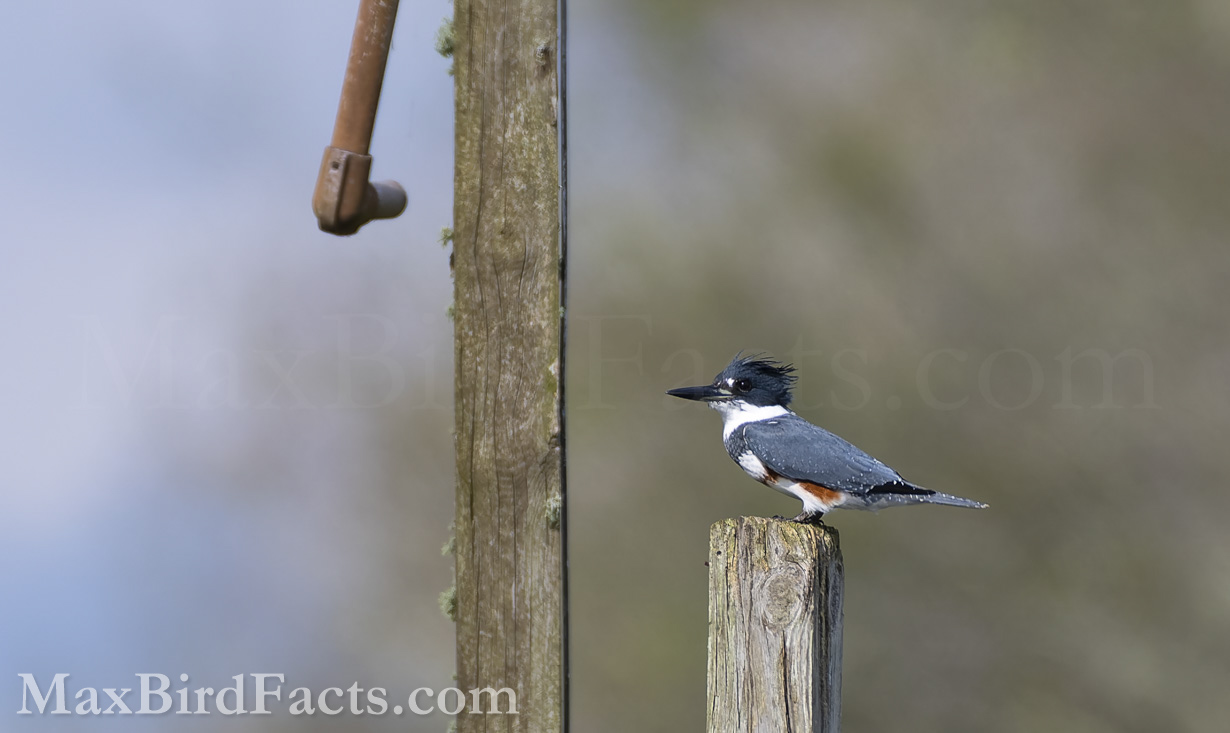
Now You Know 18 Facts About Kingfishers!
Hopefully, some of these topics were new to you, and now you can share them with your birding companions the next time you see the captivating Kingfisher in the wild.
I hope you enjoyed learning some new facts about Kingfishers! They are truly remarkable birds that deserve more recognition than they receive.
If you have ideas or suggestions for topics you would like me to write about in the future, feel free to leave a comment below or shoot me an email!
If you enjoyed this article and want to stay updated when I post the next one, sign up for my email list!
Get Outside & Happy Birding
Max
Discover more from Welcome to MaxBirdFacts.com!!!
Subscribe to get the latest posts sent to your email.
